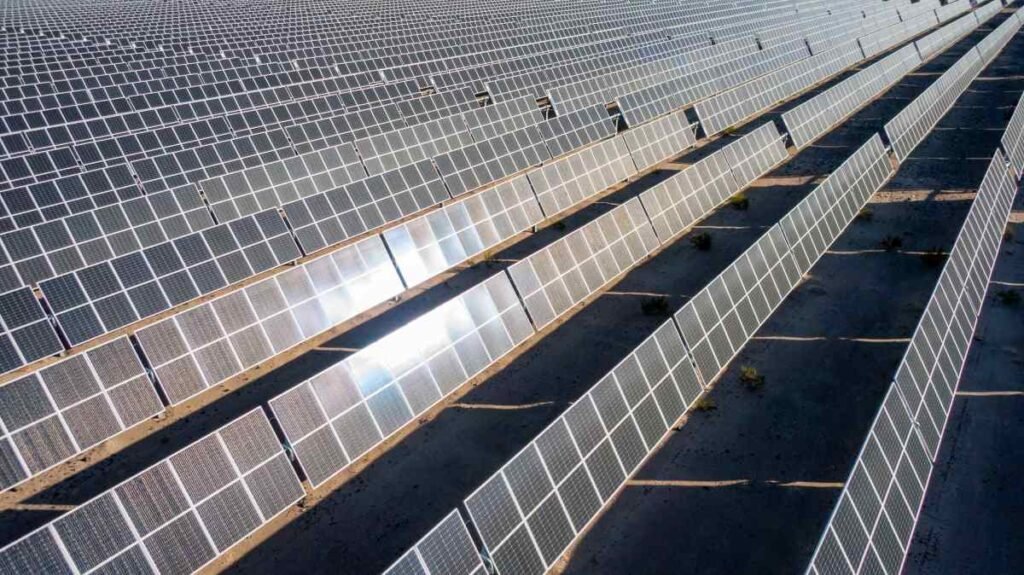In accordance with a brand new report from the Worldwide Power Company, the world will spend $580 billion on information facilities this yr — $40 billion greater than will probably be spent discovering new oil provides.
These numbers assist as an instance some massive shifts within the international economic system, and evaluating information facilities and oil appears notably apt given considerations about how generative AI might accelerate climate change.
Kirsten Korosec, Rebecca Bellan, and I mentioned the report’s findings on the newest episode of TechCrunch’s Fairness podcast.
There’s no query that these new information facilities are going to be hungry for energy, and that they may place much more stress on already taxed electrical grids. However Kirsten pointed to a possible upside, with photo voltaic poised to energy many of those new initiatives, which might additionally create new alternatives for startups pursuing revolutionary approaches to renewable power.
We additionally mentioned how these initiatives will probably be funded, with OpenAI saying it has dedicated $1.4 trillion to constructing information facilities, Meta committing $600 billion, and Anthropic lately asserting a $50 billion information heart plan.
You may learn a preview of our dialog, edited for size and readability, under.
Kirsten: Right here’s what I believe is the potential upside. So Tim De Chant, who’s our local weather tech reporter, has carried out a ton of reporting about not simply information facilities, however really how a whole lot of information facilities are turning to renewables as a result of when it comes to regulatory [hurdles] and price, they’re the go-to. It’s so much simpler to get a allow to throw up a bunch of photo voltaic panels adjoining to an information heart.
Techcrunch occasion
San Francisco
|
October 13-15, 2026
So to me, the one upside is that it might actually imply a constructive for any form of firm that’s doing attention-grabbing issues round renewables or information heart design and among the know-how to cut back the worldwide emissions element of it.
However in fact, the sheer quantity to me is what actually stood out. As a former power reporter myself, I understand how a lot is spent on looking for new oil.
Rebecca: I imply, it’s so much. And a whole lot of that’s coming from the U.S. I believe that report discovered that half of the electrical energy demand will probably be coming from the U.S., and the remaining is a mixture of China and Europe.
And one other factor that struck me about it was that a lot of the information facilities are coming to cities, or close to cities, like populations of 1,000,000 folks, roughly. So which means there’s much more problem with the grid connection and with connection pathways. I believe that, to your level, renewables should [be a focus] — it’s simply good enterprise, it’s not due to any environmentally pleasant insurance policies.
Kirsten: Redwood Supplies’ new enterprise unit, Redwood Power, goes to be an attention-grabbing firm to look at with this. Just a few months in the past, I went to their massive reveal, they usually’re taking the previous EV batteries that aren’t fairly able to be recycled, after which they’re creating these microgrids, after which particularly going after AI information facilities. And that, to me, would alleviate the issue or the priority that you simply simply talked about.
The query is: Are different corporations going to do that? Are there different Redwood Energies on the market which might be making an attempt to do the identical factor? And the way a lot of an impression might they make? As a result of I do assume that just like the stress on {the electrical} grid, particularly throughout sure instances of the yr, like in the course of the summer time, for example, locations like Texas which have rolling brownouts and blackouts, that’s going to be an actual concern. And it might spur a complete new form of funding into corporations doing what Redwood is doing.
Anthony: It additionally underlines this query about what’s that going to do to the areas that we stay in? Even when they’re not in cities themselves, I really feel just like the panorama is unquestionably going to be remodeled by development at this scale.
After which, in fact, there’s additionally this query of how a lot of [the planned data centers are] really going to get constructed as a result of there’s positively very formidable plans that require big quantities of spending.
To begin with OpenAI, that’s an organization that lots of people have been speaking about, how a lot cash are they really making versus the trillions of {dollars} of capital commitments they’ve for the following decade. After which there was this complete controversy over their CFO saying, “The federal government ought to backstop our loans to construct these information facilities.” After which she’s like, “No, no, no, no, no, I didn’t imply backstop, that was a poor selection of phrases,” however it does appear like they’ve been asking for an growth of tax credit from the CHIPS Act.
I believe that that is going to be an effort that’s not simply going to fall on the businesses, but in addition on the federal government — or not less than that’s going to be a query that the federal government is contemplating over the following few years.

